More than 1 thousand projects in the field of hydrogen energy have been announced worldwide, totaling more than $320 billion, according to Reuters. The German government will also subsidize pure hydrogen power plants of up to 500 MW for energy research purposes. Hydrogen gas power plants are expected to help Germany move away from coal entirely by 2038. Hydrogen deposits could power the world for hundreds of years, according to the US Geological Survey.
Bosch is investing $2.5 billion in hydrogen technology through 2026. The company’s focus is on creating hydrogen value chains that span the production of innovative fuel cells and engines. Bosch announced the start of mass production of a fuel cell power module.
The company’s Erkelenz project aims to achieve 90% efficiency for solid oxide fuel cells. Bosch hydrogen engines are designed for commercial vehicles and to achieve carbon neutrality in this transport segment. The launch of production of hydrogen engines, which will be comparable in power to diesel engines, but will be neutral in terms of carbon dioxide emissions, is planned for 2024. While the Japanese Toyota has already introduced a new powerful hydrogen engine for commercial vehicles.
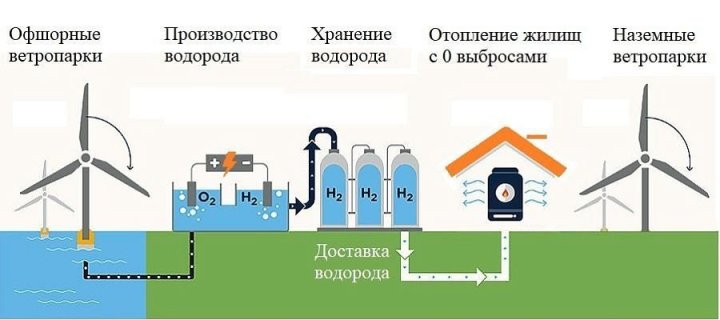
Germany and the Netherlands are aimed at cooperation to accelerate the creation of the so-called hydrogen corridor, which involves the development of technologies, projects, and infrastructure in the field of hydrogen energy. The partnership between the countries, led by Gasunie’s subsidiary Hynetwork Services, aims to develop a cross-border hydrogen corridor to unlock industrial potential in the field of hydrogen.
The Dutch authorities are positioning the country as a key player in the field of renewable energy and hydrogen technologies, which is able to create a viable national hub for the energy transition and contribute to the formation of a European hydrogen market. While Germany aims to import hydrogen to reduce carbon dioxide emissions from German industry. The country plans to create a hydrogen infrastructure for refueling hydrogen-powered vehicles over 9.7 thousand km by 2032, costing 21 billion euros.
On the other hand, “green” hydrogen, which is actively promoted as the fuel of the future, is losing its position. Thus, the German oil refinery Heide and its Danish partner Orsted A/S have postponed plans to build a plant for the production of green hydrogen due to rising investment costs and associated economic risks.
It is the second such project that Orsted has abandoned in recent months after deciding not to proceed with the construction of an electrolyser at the Humber refinery in the UK. Moreover, the Danish company recently announced a $4 billion write-down related to abandoned wind projects.
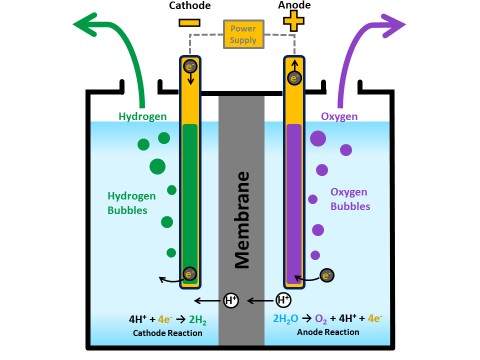
“The project must be economically viable, and in this case, unfortunately, it is not,” Jörg Kubica, managing director of Orsted in Germany, said in a statement about the Heide project. “There is no doubt that hydrogen will play an important role in the decarbonization of German industry, but the costs involved must be reasonable and a market must be created.”
The Klesch Group, which owns the Heide refinery in northern Germany, has criticized European Union proposals for green hydrogen certification. The company said in a statement that it will continue to decarbonize the Hyde site. Hydrogen is used in the production of diesel fuel and is called “green” when it is produced using water and renewable electricity. That’s about four times more expensive than producing it from fossil fuels, according to recent Bloomberg NEF estimates.
Shell Plc’s Wesseling in Germany has become the first European refinery to start operating a small green hydrogen production unit, but has not yet committed to expanding it. At the same time, the Spanish Repsol SA recently launched a plant in Bilbao, and OMV AG is close to completing the construction of an electrolyser in Schwechat in Vienna. However, these projects meet only a portion of each refinery’s needs.
Hydrogen energy in Russia
Work on the introduction of hydrogen in Russia is underway, it will definitely occupy its niche, but there is no longer much noise regarding this type of energy, the First Deputy Minister of Energy of the Russian Federation said in January at the Russia exhibition and forum. “We always said at the very beginning that we need to find the optimal path that will not become an excessive burden. What I said about renewable energy sources, the same can be said about hydrogen. It has its own clear (areas – ed.) applications, they will be in any case.
Hydrogen will occupy a limited niche. And we continue to work in this area, but, again, the “hype part” is gone, but now we see solutions, such as power supply to autonomous consumers continues… we have remote camps, fisheries, all this is possible there,” – he said, speaking at Energy Day: “Work continues on fuel energy, because it will be used for drones and water transport. But this is being done without any additional “hype”, plus we are still at the very beginning of the journey,” Sorokin added.
In December 2023, Russia and China agreed on cooperation in high technologies, including hydrogen production technologies, these are the main areas, Deputy Prime Minister of the Russian Federation Alexander Novak told reporters on Friday. “We (with China) are implementing projects in the field of nuclear energy, we are building four units in China, and renewable energy sources are a separate area. We agreed today that we will cooperate in high technologies, including in technologies for the production of hydrogen, this these are the main directions,” Novak said.
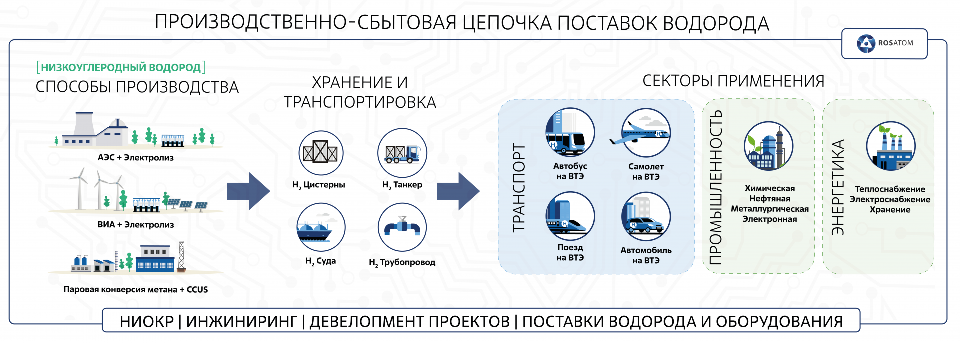
AFK Sistema and Kamaz will jointly develop hydrogen technologies. The agreement is aimed at combining and coordinating efforts in the creation of serial products that use hydrogen, including a truck, warehouse equipment, an electric water bus, mobile hydrogen filling stations and electrolyzers. AFK Sistema and Kamaz will jointly create serial products and vehicles that use hydrogen. The corresponding agreement was signed by the companies, the press service of AFK Sistema reported.
“PJSC AFK Sistema and PJSC Kamaz entered into an agreement on cooperation in the field of development of hydrogen technologies. The document was signed by the President of AFK Sistema Tagir Sitdekov and General Director of Kamaz Sergey Kogogin,” the press service said in a statement. It notes that the agreement is aimed at combining and coordinating efforts in creating serial products that use hydrogen, including a truck, warehouse equipment, an electric water bus, mobile hydrogen filling stations and electrolysers.
Sitdekov, whose words are quoted in the message, recalled that AFK Sistema has been working in this direction since 2022 and has already achieved significant results. “The agreement with such a large partner as Kamaz will give a powerful impetus to the development of hydrogen technologies not only within the perimeter of our companies, but also on a national scale,” he noted. Kogonin, in turn, expressed confidence that joint work will lead to practical results in the implementation of hydrogen technologies in a number of areas.
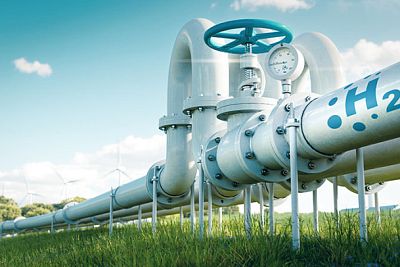
Hydrogen electric trains will start operating in Russia no earlier than 2025. Transmashholding is going to launch hydrogen trains on Sakhalin in 2025, while the holding is creating design documentation for this technology, namely the electric train. At the same time, Russian Railways previously said that they were preparing to accept the first hydrogen-powered locomotive by 2026. It is expected that its tests will take place on Sakhalin. The production of railway equipment using hydrogen fuel cells will be created by TMH, Rosatom will provide supplies of this environmentally friendly type of transport, and will also build a refueling infrastructure. Russian Railways will become the customer of this advanced equipment.
The first and only hydrogen test site in Russia will appear on Sakhalin. At the end of June this year, a Hydrogen Engineering Center with a pilot test site should be operational in Yuzhno-Sakhalinsk. Now equipment is being delivered here that will allow the production of environmentally friendly fuel using solar and wind energy. As reported by the press service of the governor and government of the Sakhalin region, the largest solar station will be built here, consisting of 600 panels with a power of 500 W each.
All necessary equipment will be delivered to Sakhalin by mid-May, after which it will be tested for a month. First of all, ecofuels will be used to operate a power plant in Novikovo, which is one of the most remote villages on the island. In addition, hydrogen will be used for the needs of the Ministry of Emergency Situations at the local airfield and cell phone towers. In the future, ecofuels will be used for public transport and heavy municipal equipment. The cluster also plans to build a hydrogen plant and launch the production of hydrogen trains. If the project is successful, clean fuel will be supplied to foreign countries.
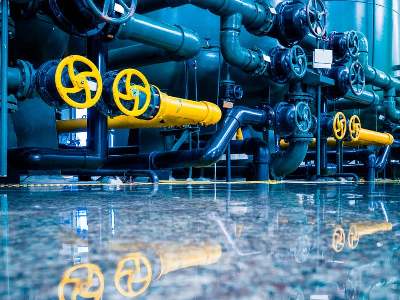
— The Sakhalin hydrogen test site is the first site of its kind in Russia. The island region won the right to implement a pilot project for the development of hydrogen energy, which was initiated by President Vladimir Putin. If the experiment is successful, in a few years a hydrogen plant will be launched and the export of clean fuel to the countries of the Asia-Pacific region will be launched, the press center of the Sakhalin government said.
Experts note that hydrogen is much more environmentally friendly than natural gas. It does not emit harmful carbon dioxide when burned, unlike the latter. At the same time, hydrogen reserves are practically limitless. It releases a lot of pure energy and can be used in most areas of life. Such a project will be a real boon for Russian scientists.
“Hydrogen production technologies are not yet particularly widespread, so the Sakhalin experimental hydrogen test site will be a godsend for scientists from all over the country,” the government of the Sakhalin region emphasized.
Hydrogen production in Iran
Iran’s oil refineries produce 300 million cubic feet of hydrogen per day. National Iranian Oil Refining and Distribution Company (NIORDC) head Jalil Salari said the country’s refineries produce 300 million cubic feet of hydrogen every day, which is consumed domestically, Shana reported. Stressing the need for cleaner fuels in the country, Salari said, “The inclusion of hydrogen in the country’s fuel basket depends on energy prices and the competition it may have as a clean fuel in the fuel basket.”
Highlighting that the largest hydrogen production in the country is done by NIORDC, Salari added: “Hydrogen production is expensive given the resources available. However, it can take a place in the country’s fuel basket provided that we take a long-term view of energy resources.” “To include hydrogen in the fuel basket, it is necessary to indicate the sources of production, method of consumption and volume of consumption,” he noted.
Hydrogen can be used as a fuel in two different ways: in fuel cells, which produce electricity, and by combustion to produce heat. When hydrogen is consumed in fuel cells, the only emission at the point of use is water vapor. The combustion of hydrogen can thermally generate harmful nitrogen oxide emissions.
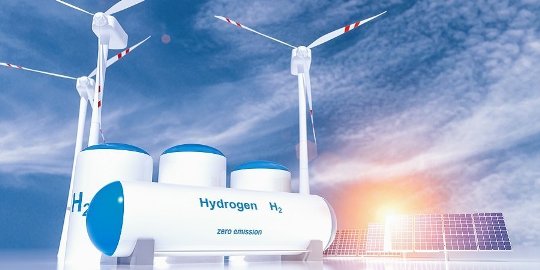
In the context of limiting global warming, low-carbon hydrogen (especially green hydrogen) is likely to play an important role in the decarbonization industry. Hydrogen fuel can generate the high temperatures required for industrial production of steel, cement, glass and chemicals, thereby helping to decarbonize industry along with other technologies such as electric arc furnaces for steelmaking.
Hydrogen reservoir in Albania
“This is another dimension”: a huge reservoir of hydrogen was found under an Albanian mine. A piece of ancient oceanic crust in Albania is not only the site of one of the largest chrome mines on Earth. They also found a huge reservoir of hydrogen, a potential source of clean energy. A huge reservoir of hydrogen may lie deep beneath a chrome mine in Albania, a new study has found. It lies within part of the Earth’s crust and mantle that once lay at the bottom of the ocean. The tectonic plate she was riding on slipped under another and the layer was scraped off.
A crushed slab of crust was thrown onto land between 45 and 15 million years ago. It formed a 3,000 km long rocky belt – the ophiolite – that stretches from modern Turkey to Slovenia. Ophiolites exist throughout the world, and researchers have previously documented hydrogen gas leaking from wells and mines drilled into these formations. Now scientists have discovered the reservoir thanks to huge clouds of hydrogen gas from reservoirs inside the Bulkize mine, which is located 40 km northeast of Tirana, Albania.
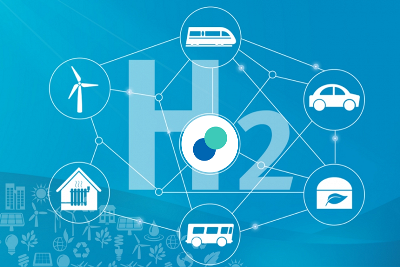
Such reservoirs can be used to produce carbon-free fuel. The problem is that the deep infrastructure necessary for this is missing, and gas production is difficult. “What we observed deep in the mine is another dimension. The drainage pool inside the mine gallery was transformed into a breathtaking 30-square-meter Jacuzzi, boiling with almost pure hydrogen,” said study author Laurent Truchet, a professor of geochemistry at the University of Grenoble-Alpes in France.
Scientists have explored the deepest levels of the Bulkize chrome mine and recorded huge amounts of hydrogen gas flowing from rocks and bubbling through pools of water. Their measurements showed that at least 200 tons of high-quality hydrogen are released from the mine every year. This is one of the largest natural hydrogen fluxes recorded to date.
Hydrogen production in Denmark
Swiss company H2 Energy Europe, a developer of hydrogen ecosystems in Europe, has received environmental approval for its large-scale green hydrogen production plant in Esbjerg, Denmark. The approval for the plant, which will have an electrolysis capacity of 1 GW, is considered a major milestone, moving the project closer to a final investment decision (FID). According to H2 Energy Europe:
– the planned facility will contribute to the decarbonization of heavy industry and road transport, and will also serve as chemical feedstock for the production of environmentally friendly biofuels such as methanol and ammonia, contributing to Europe’s transition to a green economy;
– in addition to creating approximately 60 permanent jobs and up to 700 jobs during the construction phase, the facility will also produce CO2 neutral waste heat, potentially providing district heating to the majority of households in Esbjerg.
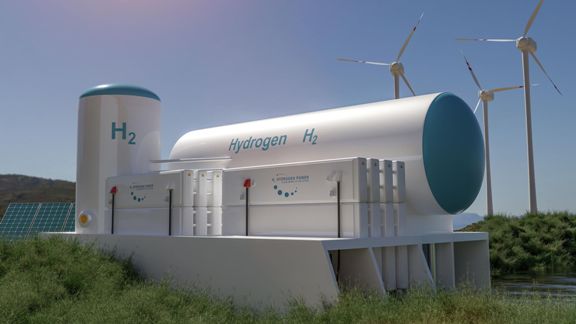
Theses from the Mayor of Esbjerg J.F. Rasmussen:
– the environmental approval granted by H2 Energy Europe for the future hydrogen plant is of great importance for Esbjerg, positioning it as a leading green business city in Europe;
– H2 Energy Europe will play a key role in attracting additional power generation companies to Esbjerg;
however, there remains a need for clarity regarding the location of the hydrogen pipeline and its intended operation, which are critical to the establishment of a robust hydrogen industry in Denmark
While this approval represents an important milestone for Denmark on its path to leadership in Power-to-X technology, H2 Energy Europe said it recognizes the challenges that lie ahead. To recap, Power-to-X is the process of converting excess renewable energy into a form that can be stored, in this case hydrogen. The significance of the proposed pipeline, which is scheduled to be completed by 2028, cannot be overstated as it will play an important role in distributing the green hydrogen produced at the site to other European countries, strengthening the Danish economy.
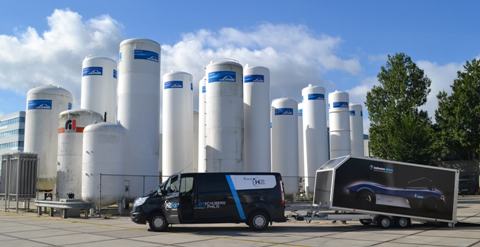
The project aims to contribute to Denmark’s renewable energy (RES) goals as the country plans to cut carbon emissions by 70% by 2030. The hydrogen is expected to come from excess electricity produced by an offshore wind farm in the North Sea located not far from the future facility.
On March 24, 2023, it became known that Germany and Denmark agreed to cooperate in the development of infrastructure for the supply of green hydrogen from 2028. It was noted that the parties would jointly promote the creation of infrastructure for the supply of green hydrogen between Western Denmark and Northern Germany from 2028. , incl. a project to build an onshore pipeline for transporting hydrogen will be implemented. The pipeline will cross the border between Northern Germany and Western Denmark.
Hydrogen power generation in Germany
Germany plans to convert gas power plants to hydrogen by 2032. Germany’s Economics Ministry is planning a transition to hydrogen by 2032 to allow the country’s gas-fired power plants to switch entirely to hydrogen fuel between 2035 and 2042, news agency Reuters reports. The German government has agreed on subsidies worth 16 billion euros for the transition to hydrogen in gas-fired power plants in the country.
A statement on this matter came from the German Ministry of Economics, reports Reuters. This is part of initiatives aimed at accelerating the transition to low-carbon electricity generation and supporting intermittent clean energy sources. Also, the German Ministry of Economics stated that a tender for the construction of four gas power plants with a total capacity of up to 10 GW will be held in the near future.
Government support is intended for companies involved in the construction and operation of gas power plants that will run on hydrogen, the news agency reports. The German government will also subsidize pure hydrogen power plants of up to 500 MW for energy research purposes. Hydrogen gas power plants are expected to help Germany move away from coal entirely by 2038.

The hydrogen fuel car, in the development of which racer from the Russian Federation Sergei Karyakin took part, went into mass production in Germany. “We were fulfilling an order for a German company. The power plant project, in the development of which I took part, was used for the construction of buggies in Germany. This machine can be used in tourism, sports and even in the mining industry. It has already gone into production and is being used,” Karyakin told the TASS agency.
Earlier, at the beginning of 2022, the driver stated that he intended to create a car using hydrogen fuel, which could be used to participate in the Dakar rally marathon. In March of the same year, it was announced the creation of a joint laboratory for the development of hydrogen aircraft and car engines between Sergei Karyakin’s racing team Snag Racing and the Ecolibri aviation design bureau.
The reason for the development of the car was the requirements of the organizers of the Dakar race – in 2026, all priority athletes, which include Karjakin’s crew, must drive on alternative fuel, this is a mandatory condition. As for the use of a hydrogen engine in the Russian Federation, according to the racer, the equipment needed for production is under sanctions, and bringing it to Russia costs a lot of money. “Therefore, now the story with the hydrogen engine has been paused, since there is no necessary localization in Russia. I hope the project will come to life when sanctions are eased,” Karyakin noted.
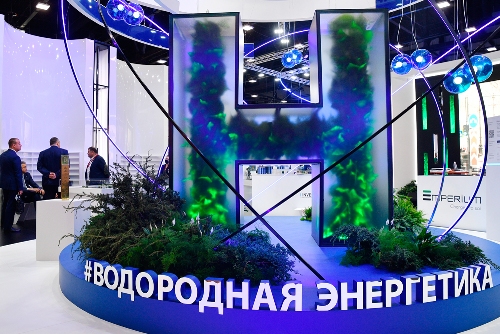
It is worth noting, however, that the necessary technologies may soon appear in Russia. AFK Sistema and KamAZ have entered into an agreement under which they will jointly develop serial products and vehicles that use hydrogen. The agreement is aimed at combining and coordinating efforts in the creation of serial products that use hydrogen, including a truck, warehouse equipment, an electric water bus, mobile hydrogen filling stations and electrolyzers.
Germany is starting to build hydrogen filling stations. The first hydrogen filling station for trucks and cars in Germany began to be built by the German E.ON – the hydrogen filling station is being built using budgetary funds. The German E.ON is starting to build a hydrogen filling station for trucks and cars in the city harbor of Essen. With a €23 million grant from North Rhine-Westphalia, the company is strengthening hydrogen mobility in the region.
“With the help of the Ministry of Economy, Industry, Climate Protection and Energy, we are able to meet our customers’ strong demand for fuel cell truck refueling stations. This is an important milestone for the entire region,” said Carsten Borchers, Managing Director of E.ON Hydrogen. By using 350 and 700 bar pumps at the planned hydrogen filling station, E.ON wants to provide refueling for all fuel cell vehicles available on the market.
Hydrogen in India
Indian oil company Bharat Petroleum has announced its plans to build India’s first green hydrogen production plant. The capacity (1000 kW) is planned to be located at the Cochin International Airport. The initial capacity of the hydrogen plant at the airport is planned to be used for refueling vehicles on the territory of the airport, BPCL reported.
BPCL has planned an investment of $18.6 billion over the next five years to develop its oil business and expand renewable energy assets to achieve net zero by 2040. India’s net-zero emissions target is 2070.
Hydrogen energy in the USA
The US Department of Energy announced the allocation of $750 million for hydrogen projects in 24 states. Today, the vast majority of hydrogen in the United States is produced by fossil fuel-powered electrolyzers, which produce constant emissions. The new grants will help the U.S. achieve its National Clean Hydrogen Strategy goals, including producing 10 million tons of green hydrogen (hydrogen produced using renewable energy sources) by 2030.
There are 52 projects across the country in states from Rhode Island to Oregon that are working on six aspects of the hydrogen industry, including research and development in electrolyser manufacturing, securing equipment supply chains, and processing critical materials used in hydrogen production, such as iridium. writes Reuters.
Hydrogen production
Hydrogen deposits could power the world for hundreds of years, according to the U.S. Geological Survey. According to the study, the results of which were presented at the annual conference of the American Association for the Advancement of Science (AAAS) in Denver, the world’s reserves of hydrogen in underground sources reach 5 trillion tons.
“The bulk of the hydrogen is likely unavailable (for development – IF), but even if a few percent were extracted, this would be enough to meet all expected needs – 500 million tons per year – for hundreds of years,” the Financial Times quotes the head of the study as saying. Jeffrey Ellis. A significant portion of the demand for hydrogen as a fuel and industrial raw material (used, among other things, in the production of ammonia and fertilizers) is met by reforming gas, which consists primarily of methane. In this case, in the case of capturing carbon dioxide emissions, the resulting hydrogen is called “blue”, in the opposite case – “gray”.
In smaller quantities, hydrogen is produced by electrolysis of water using renewable energy sources. In this case it is called “green”. However, the production of natural – geological, or “golden” – hydrogen will be more environmentally friendly and cheaper than the production of “blue” or “green”, believes Manly Zhang from the Colorado School of Mines. “There is a gold hydrogen rush coming,” she said at the AAAS conference.
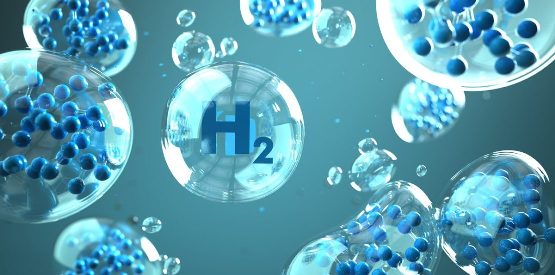
Previously, it was believed in scientific circles that there was unlikely to be much pure hydrogen underground, since it was absorbed by microbes and destroyed during geochemical processes. Now, geologists believe that large volumes of hydrogen are produced when a number of minerals with high iron content react with water, Alexis Templeton of the University of Colorado, Boulder noted at the conference.
Moreover, hydrogen deposits require different geological conditions than oil and gas deposits. “We weren’t looking for hydrogen deposits in the right places with the right tools,” Ellis said.
Now geologists are discovering natural hydrogen deposits in different parts of the planet, writes FT. Thus, in February, researchers reported the discovery of a source of hydrogen with a production rate of more than 200 tons per year at the Bulkiza chromite mine in Albania. The American Natural Hydrogen Energy, meanwhile, has drilled an exploration well in Nebraska and expects to reach commercial production within a couple of years.
The first natural hydrogen was produced in the village of Bourakebougou in Mali. Since 2012, almost pure hydrogen has been supplied from the well located there without weakening the pressure, which has made it possible to electrify this populated area. The discovery of the Malian field may have started a “hydrogen rush” – a phenomenon comparable to the birth of the oil industry in 1859, when Edwin Drake drilled the first oil well in Pennsylvania, says Jeffrey Ellis.
Hydrogen engine
There is also a concept for the development of hydrogen energy in Russia. Why hydrogen is attractive and which companies are ready to put a hydrogen engine into mass production, Andrei Khoroshilov, general director and founder of the environmental service “Save the Forest,” told Hi-Tech. Hydrogen engines are being developed not so much for private car owners as for companies operating mixed fuel fleets. For example, the Man engine with a high-capacity pressurized hydrogen storage system has a power output of 290 hp. up to 500 hp.
The hydrogen engine is an innovative technology that operates on the basis of the reaction between oxygen and hydrogen, without emitting carbon dioxide or other toxic waste, producing only electricity and water. This significantly reduces air pollution. A hydrogen engine uses high pressure to store the gas, which is then mixed with air and ignited by a spark plug. Rapid combustion creates pressure in the chamber, driving the pistons and crankshaft.
Despite the potential of hydrogen engines, the interest of states and automakers, mass production still remains a serious challenge. The main problem is the difficulty of storing and transporting hydrogen, which requires special conditions due to its volatility.
Various technologies are being explored, such as compressed hydrogen, liquid hydrogen and solid-state storage. Compressed hydrogen requires high pressure and special cylinders, which can be dangerous and inconvenient for people. Liquid hydrogen requires very low temperatures and special insulating materials, which also makes it not very suitable for use in cars.

At the moment, infrastructure is developing slowly, for example, Shell announced at the beginning of 2024 that it would close its network of gas stations in California. Establishing and maintaining gas stations requires significant investment from governments and companies. In addition, producing hydrogen itself is energy-intensive and requires the use of environmentally neutral methods. This slows down the development and spread of this technology.
Some companies are already offering cars with hydrogen engines, at least in small-scale production, for example, Toyota will provide cars to participants and organizers of the Olympic Games in Paris. This is one of two hydrogen models on the market today, the Toyota Mirai. Honda, in turn, consistently adheres to its goals to reduce its carbon footprint, announcing a transition to 100% production of electric and hydrogen vehicles by 2040. The hydrogen-powered model is slated to go into production in the United States starting in 2024. Small-scale production of such models is located in Ohio.
The share of private owners of hydrogen-powered cars will remain small. There are much more opportunities for development in the field of passenger transport, for example, rail. TMH, Rosatom and Russian Railways are implementing a hydrogen fuel railbus project. The experiment is taking place on the Sakhalin Railway. Also, the first prototype of a bus with a hydrogen engine was presented by Kamaz in 2021, but already in 2024 the automaker plans to mass produce hydrogen buses using domestic components.
In 2023, scientists from the Institute of Oil and Gas of the Siberian Federal University presented an experimental model of such an engine for the Arctic, which, due to its energy efficiency and environmental friendliness, is suitable for permafrost areas. According to the inventors, it is assembled from domestic components and has no analogues in the world in terms of its characteristics.
According to the concept of hydrogen energy development, by 2030, up to 10% of passenger transport is planned to be converted to hydrogen. Time will tell how realistic these intentions are. First of all, the development of infrastructure for storing, transporting and refueling hydrogen is required. Serial production of hydrogen engines for transport is not so much a technical as an environmental achievement towards minimizing the carbon footprint. The transition to hydrogen energy is an evolutionary process; the development of mass production of such transport will significantly reduce dependence on oil and will help preserve a cleaner environment in the future.




